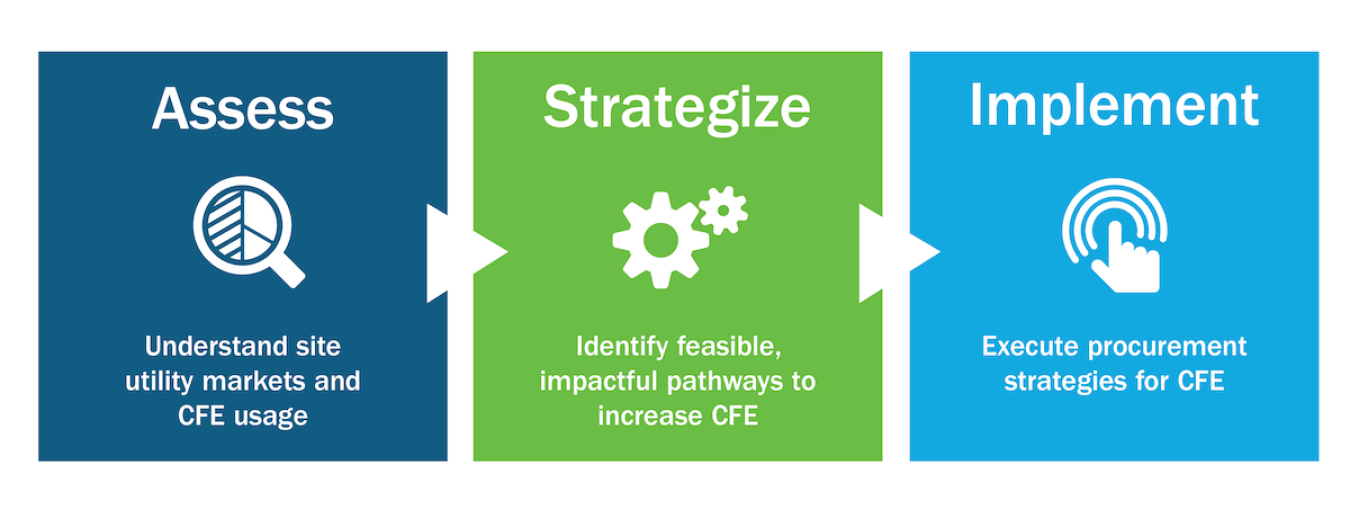Need assistance?
Visit the FEMP Assistance Request Portal to be connected with FEMP experts.
On August 3, 2022, the Biden-Harris Administration announced the Climate Smart Buildings Initiative (CSBI), which will leverage public-private partnerships to modernize federal buildings to better meet agencies' missions, create good-paying jobs, and cut greenhouse gas (GHG) emissions. The CSBI is expected to:
- Catalyze over $8 billion of private sector investment by 2030 to modernize facilities through performance contracts.
- Create and support nearly 80,000 jobs.
- Achieve up to 2.8 million metric tons of GHG reductions annually by 2030.
- Increase investments from performance contracts to a sustained $1.2 billion per year by 2030.
The Federal Energy Management Program (FEMP) provides agencies with expert assistance, guidance, and training to help them implement performance contracts, including both energy savings performance contracts (ESPCs) and utility energy service contracts (UESCs).
The resources below can serve as a helpful starting point for agencies looking for training and best practices on implementing performance contracts.
CSBI Planning Tool
FEMP developed a CSBI planning tool to help agencies estimate GHG reductions from their planned performance contracts.
This tool helps agencies fulfill the White House Council on Environmental Quality's (CEQ) requirements to submit Appendix D: Net-Zero Emission Building Strategic Plan for FY 2025.
Access the CSBI Tool and instructions.
The following video provides an overview of the tool, including its purpose, how to use the tool, and other considerations. The speakers also provide a live demonstration.
CSBI Target Tracker
CSBI sets a goal for the federal government to achieve 2.8 million metric tons of GHG reductions annually by 2030. To track progress toward this goal, CEQ provided federal agencies with the CSBI Target Tracker tool. This Excel-based tool supports agencies in setting GHG emissions reduction targets to achieve using performance contracting.
The following video provides an overview of the tool, which helps agencies set emission reduction targets; track projects in planning, development, and awarded states; and track progress toward agency targets.
Energy Savings Performance Contracts
- ESPC program overview
- Process for procuring an ESPC
- Workshops, webinars, and training
- Frequently Asked Questions regarding the scope of the ESPC statutory authority
- ESPC ENABLE: a streamlined procurement process for small federal projects
- ESPC energy sales agreement (ESA): uses the ESPC authority to implement distributed energy projects on federal buildings or land
- Case studies.
Utility Energy Service Contracts
Federal Project Executives

Locate the FPE for your region to begin working on an ESPC, UESC, or ESPC ENABLE project.
Federal Project Executives (FPEs) help agencies launch ESPCs, ESPC ENABLE projects, and UESCs by helping with acquisition planning tasks. This support can include helping to determine whether a performance contract project is feasible and helping to gain management support for a project.
To learn more about FPEs and to access FPE contact information, please visit the FPE webpage.
AFFECT Funding Opportunity
The U.S. Department of Energy's Assisting Federal Facilities with Energy Conservation Technologies (AFFECT) grant program assists selected agencies in maximizing external funds to implement energy conservation measures. The Infrastructure Investment and Jobs Act of 2021 provided $250 million in funding for the AFFECT program to promote innovative decarbonization strategies through performance contracting.
Read more about the 31 federal agency projects receiving the first of three disbursements and subscribe to the FEMP Digest for important updates.
Distributed Energy Resources

Learn more about a comprehensive approach to CFE planning and procurement.
The following resources may help agencies incorporate distributed energy resources and/or carbon pollution-free electricity resources into a performance contract.
- Process for planning and implementing federal distributed energy projects
- REopt: The Renewable Energy Integration and Optimization platform recommends the optimal mix of energy technologies to meet cost savings, resilience, emissions reductions, and energy performance goals.
- Distributed energy interconnection checklist
- Technical specifications
- Carbon pollution-free electricity resources for federal agencies.

